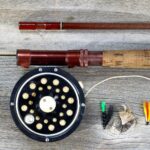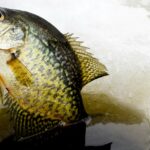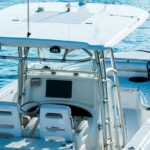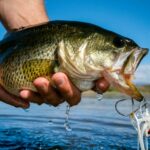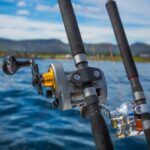While not as popular as some of the more glamorous fishing forms, bottom fishing is enjoyable. However, the gear used often differs slightly from “regular” fishing, particularly the sinker selection. So to investigate a “murky issue,” let’s explore what size weight you need for bottom fishing.
Most anglers opt for a sinker weighing between ⅛ and 4 oz when fishing near the bottom of a water body. However, the type of water body, the current strength, the fishing technique, the bait you’re using, and the species you’re targeting are essential in dictating the sinker’s weight.
Unfortunately (or fortunately), fishing is not an exact science. While a certain gear setup might shine on a particular day, that same gear may produce no results on the next. Water bodies experience a fluctuation in conditions, so understanding what you’re dealing with is integral to what size weight you need.
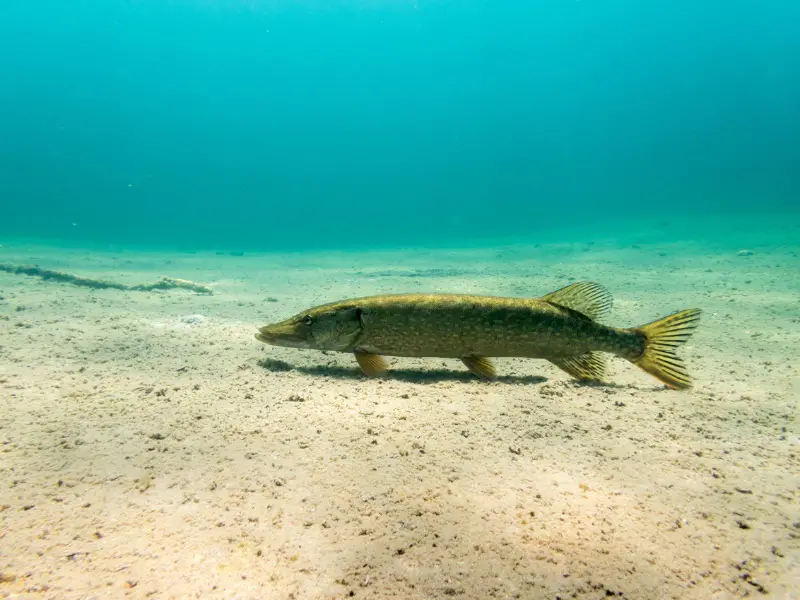
Bottom Fishing: Weight Sizes And The Determining Factors
As the name implies, bottom fishing occurs close to (or on) the waterbody’s substrate. This fishing targets benthic species and requires sufficient weight to drop the rig/hook set to the water body’s floor and keep it there.
While most anglers use sinkers ranging from 0.5 to 8 oz (and more), bottom fishing anglers use weights between ⅛ and 4 oz.
Using a sinker that’s too light may result in your bait and hook not descending entirely, reducing the likelihood of bottom-dwelling fish striking at it. Alternatively, an underweight sinker may result in your hook set shifting underwater in a current, pushing away from a prime spot.
The type of water body, its depth, the target species, and your technique influence the exact weight size needed.
The rest of this article examines the size influencing criteria in more detail.
The Type Of Fishing Technique And Gear You’re Employing
Many anglers set up 10 to 20-lb spinning rods when bottom fishing, and they’ll use single or multiple-arm (lengths of line that branch off the main line with hooks and bait for fishing at multiple depths on the same main line) rigs.
The benefit of a multiple-arm setup (while fishing on the bottom) is that you simultaneously present a hook set to fish higher up in the water column, increasing your chances of success. With multi-arm rigs, your sinker (attached at the bottom of the rig) is essential for holding it all together.
While the temptation to use a larger weight is there, try avoiding it. A larger sinker is more difficult to retrieve, makes your line less sensitive, and may break your rod if it’s out of its compatibility range.
It’s better to start smaller and increase the weight if you find that you’re too light (provided you can see the bottom/feel the line moving in the current).
Bottom fishing is possible from a boat or the shore. However, your sinker’s weight differs.
While fishing from a boat is slightly easier (your line drops vertically), shore fishing is a bit more challenging, and you’ll need a slightly heavier sinker to cast to specific points (as far as possible) to get the most out of bottom fishing.

The Type Of Sinker Determines What Weight Size You Use
Although sinker choice relates drastically to personal preference, there are several more commonly used sinkers, including:
- Bank Sinker (range from 1 to 48 oz). These sinkers are fantastic for medium to heavy-duty rods and excel in deep-sea fishing. However, most bottom anglers would go to around 8 oz. You may use up to 12 oz in specific cases, but more than that is unlikely.
- Egg sinkers (range from ¼ to 1 ½ oz). These lightweight sinkers are ideal for Carolina Rigs. Their weight and shape allow significant movement on the substrate.
- Pyramid sinkers (range from 1 to 5 and 8 oz). These heavy sinkers are ideal for deeper water bodies, especially if a moderate to strong current exists.
Egg sinkers work well in shallower water, while bank and pyramid sinkers are better for deeper water and strong current conditions.
Using Split Shot Sinkers To Determine The Necessary Weight Size
If you’re a new angler and don’t know where to begin determining what size weight you need, try using split shot sinkers. They are easy to use and conveniently don’t need to be tied on (as you crimp them).
Add one or two of these weights and observe the line’s behavior. Should it require additional weight, crimp another split shot and re-evaluate the progress.
Smaller changes are better. Sometimes an increase of .5 oz is enough weight. Most anglers agree that the lightest possible sinker is the best one.
The Target Fish Species
When bottom fishing, anglers target benthic-dwelling fish species. However, not all bottom dwellers take the same bait presentation, and you may need a different sinker size depending on your target species.
While bottom fishing, you might target carp, catfish, kingfish, perch, red snapper, sea bass, spot croaker, and many more.
Certain fish prefer their bait higher than the floor. It’s up to you, the angler, to find out where your target fish want to eat and then use an appropriate sinker to hold the line there.
Environmental Factors Influencing Weight Size For Bottom Fishing
While the fish species and your fishing techniques are essential in selecting the correct size and weight, the environmental conditions are equally important.
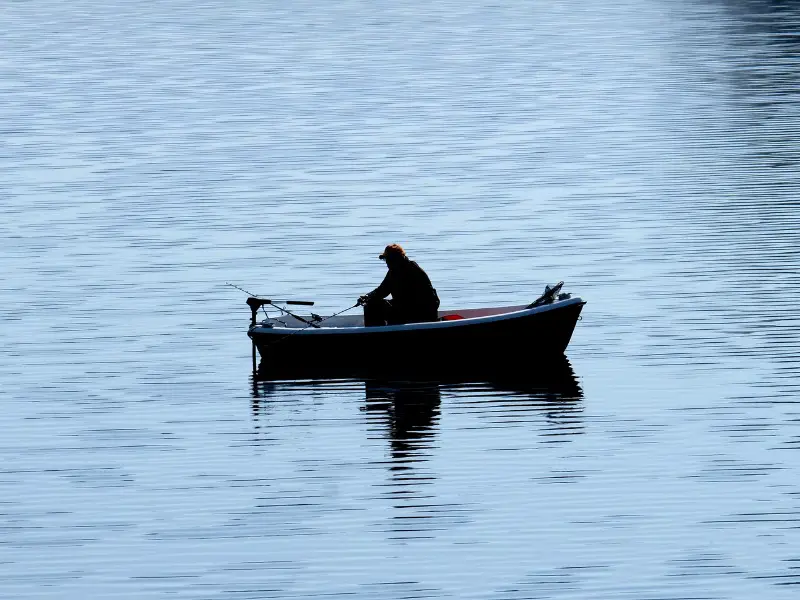
Water Body Type And Depth
Although not set in stone, deeper water bodies require heavier sinkers to reach the bottom quicker. When you have an impressive wall of water between you and your quarry, it requires a heavier sinker to descend the water column and hold the rig in place.
Your sinker must be the correct weight when working through 20 ft plus of water. While holding the hook set, the sinker must remain light enough for retrieval without putting too much strain on your rod and reel.
Current Strength
Water bodies with stronger currents require heavier weights to effectively hold the hook in the correct position.
For example, if you’re fishing in a calm lake, a Carolina Rig armed with a lighter (around ⅛ oz) egg sinker should be sufficient, while in water up to 20 feet deep, you’ll use a ¼ to ½ oz sinker.
However, if you’re fishing in a fast-flowing river or below 20 feet, you’ll need a 1 to 4-oz pyramid or bank sinker to hold your line in one spot.
When facing strong ocean currents in relatively deep water, you’ll need a hefty (8 oz and more) pyramid or bank sinker.
While fishing in relatively shallow lakes, a lighter egg is often sufficient.
Obstacles And Structures
When bottom fishing, you’re often at the mercy of rocks, submerged logs, and other obstacles. The fish in these nether parts have a penchant for diving under said structures after taking a bite into the hook.
Your sinker’s shape needs to accommodate this behavior. However, its weight is equally important for keeping your line stationary in the water column.
I.e., when fishing next to a pier or close to aquatic vegetation, your sinker should be strong enough to hold your line close but not allow it to get tangled up around the structure/obstacle.
If there is a lot of underwater vegetation, your sinker must be heavy enough (1 to 2 oz) to penetrate the growth and reach the bottom.
Conclusion
A sinker is essential to any angler’s arsenal, especially when bottom fishing. Although sinkers have a variety of sizes and shapes, you generally use an egg sinker in calm and shallow water or a pyramid or bank sinker in deeper or rougher conditions. Most bottom fishing sinkers are between ⅛ and 4 oz.
- Do You Need An Indicator For Nymph Fishing? - November 16, 2023
- Fishing Safety Tips For Families - September 25, 2023
- What Is The Best Time To Night Fish At A Lake? - September 18, 2023


